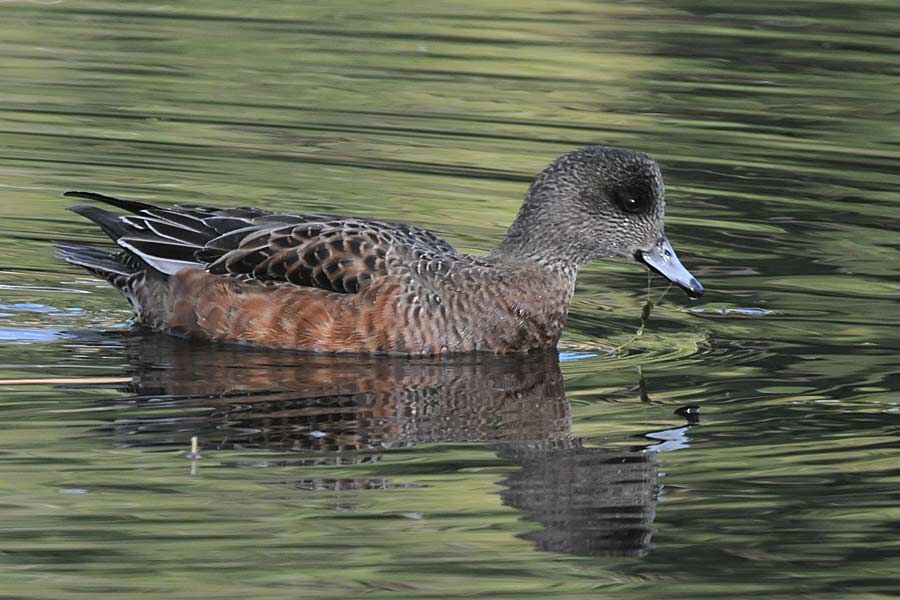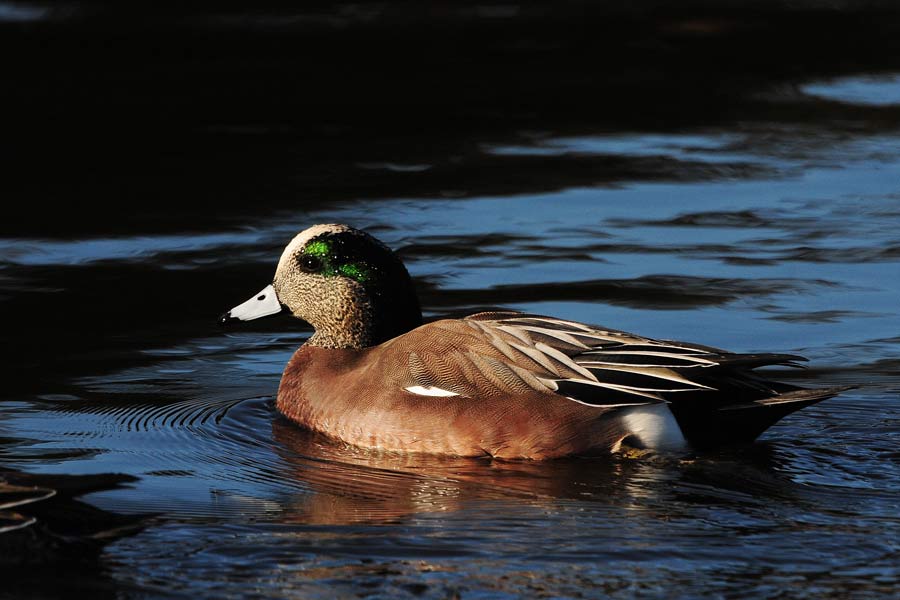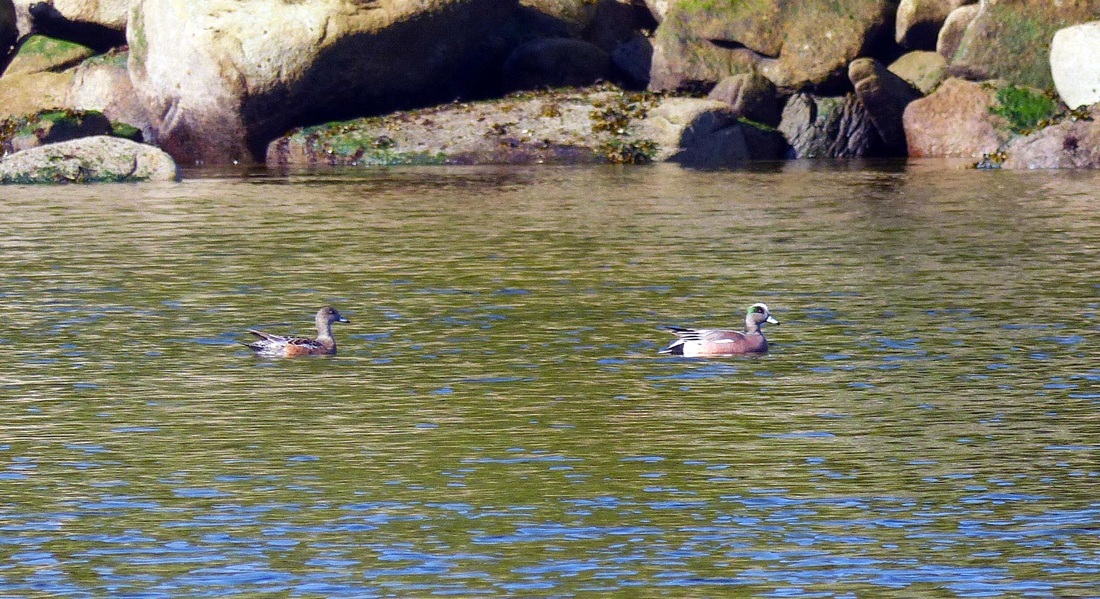American wigeon • Anas americana
|
Top: female (left) and male (right) American wigeons photographed by Mike Yip. Bottom left: male photographed by Josh Silberg. Bottom right: male and female photographed by Brian Starzomski.
|
Identification
The breeding male plumage of this medium-sized duck is relatively easily identified: it has a white forehead and crown, and a green patch on either side of the head. The female plumage and the male eclipse plumage (which is relatively fleeting) have less distinctive greyish heads. Both male plumages have large white upper wing patches that are more obvious in flight, but may also be visible when the wings are folded; they also have dark green speculums. In all plumages this species has a reddish-brown (varying from pinkish to cinnamon) breast and flanks, a white belly, and a black bill tip. Click here for further details on the difference plumages.
Habitat & Range
This common species inhabits fresh and saltwater marshes, bays, lakes, other wetlands, and fields. It is found throughout much of northern North America during the summer breeding months, although not the west coast of BC; it is present on the coast and throughout much of the United States during the winter months.
Find more information at the British Columbia Breeding Bird Atlas here.
Similar Species
The Eurasian wigeon (Anas penelope) is occasionally found on the Central Coast in winter; while the breeding males look different, the eclipse males and females of the two species are easily confused. The "armpits" (axillaries) are white on the American wigeon and grey on the Eurasian; otherwise the two look very similar. To confuse things further, the two species also regularly hybridize The reddish-brown breast and flanks help distinguish the otherwise unremarkable eclipse and female plumages of the American wigeon from those of other more common west coast ducks.
Intriguing Info
This species was once known as the "baldpate" due to a resemblance between the breeding male's white head stripe and a balding head.
The breeding male plumage of this medium-sized duck is relatively easily identified: it has a white forehead and crown, and a green patch on either side of the head. The female plumage and the male eclipse plumage (which is relatively fleeting) have less distinctive greyish heads. Both male plumages have large white upper wing patches that are more obvious in flight, but may also be visible when the wings are folded; they also have dark green speculums. In all plumages this species has a reddish-brown (varying from pinkish to cinnamon) breast and flanks, a white belly, and a black bill tip. Click here for further details on the difference plumages.
Habitat & Range
This common species inhabits fresh and saltwater marshes, bays, lakes, other wetlands, and fields. It is found throughout much of northern North America during the summer breeding months, although not the west coast of BC; it is present on the coast and throughout much of the United States during the winter months.
Find more information at the British Columbia Breeding Bird Atlas here.
Similar Species
The Eurasian wigeon (Anas penelope) is occasionally found on the Central Coast in winter; while the breeding males look different, the eclipse males and females of the two species are easily confused. The "armpits" (axillaries) are white on the American wigeon and grey on the Eurasian; otherwise the two look very similar. To confuse things further, the two species also regularly hybridize The reddish-brown breast and flanks help distinguish the otherwise unremarkable eclipse and female plumages of the American wigeon from those of other more common west coast ducks.
Intriguing Info
This species was once known as the "baldpate" due to a resemblance between the breeding male's white head stripe and a balding head.
References
American Wigeon Anas americana. Audubon Birds. National Audubon Society. Accessed 02/03/2016.
American Wigeon Anas americana. The Birds of North America Online (A. Poole, Ed.). Ithaca: Cornell Lab of Ornithology. Retrieved from the Birds of North America Online. Accessed 02/03/2016.
Dunn, J. L. and Alderfer, J. (Eds.). (1999). National Geographic Field Guide to the Birds of North America. (3rd Ed.). Washington, D.C.: National Geographic Society. Pp. 30-31.
Authors and editors of page
Kelly Fretwell (2016).
American Wigeon Anas americana. Audubon Birds. National Audubon Society. Accessed 02/03/2016.
American Wigeon Anas americana. The Birds of North America Online (A. Poole, Ed.). Ithaca: Cornell Lab of Ornithology. Retrieved from the Birds of North America Online. Accessed 02/03/2016.
Dunn, J. L. and Alderfer, J. (Eds.). (1999). National Geographic Field Guide to the Birds of North America. (3rd Ed.). Washington, D.C.: National Geographic Society. Pp. 30-31.
Authors and editors of page
Kelly Fretwell (2016).







